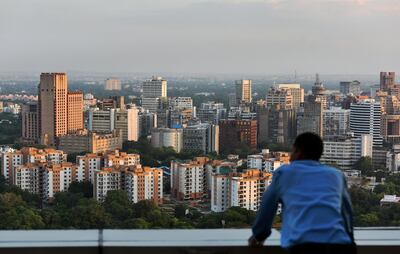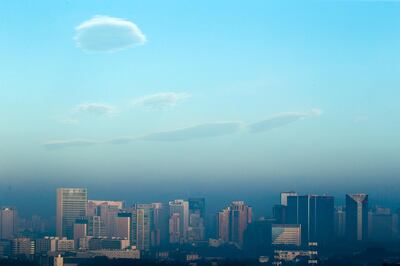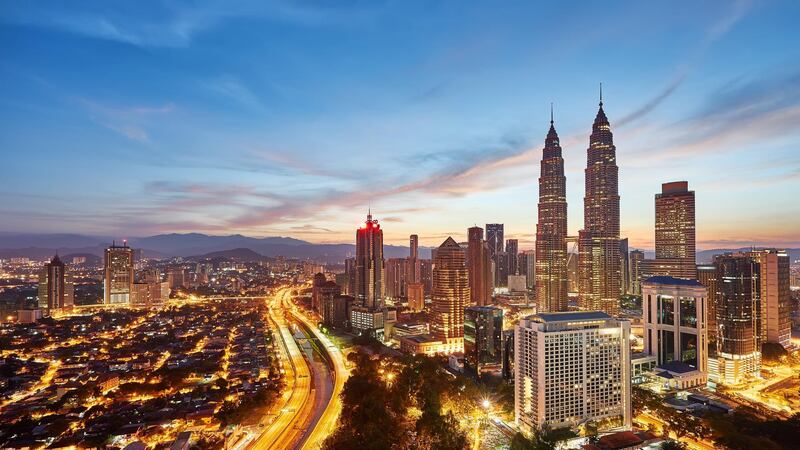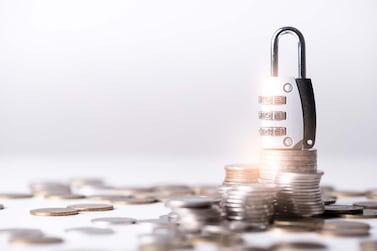Emerging Asia has been the investment story of the 21st century, as China's rush to become a global economic superpower has turned the global economy upside down and pulled the rest of the continent along in its wake.
The International Monetary Fund's definition of emerging and developing Asia includes giants China and India, as well as Hong Kong, Korea and Taiwan, and others including Bangladesh, Indonesia, Malaysia and Thailand, but excludes Japan.
In 1980, emerging Asia contributed just 10 per cent of global gross domestic product, but that now stands at 36 per cent, IMF figures show.
The region’s growth rate continues to outstrip the rest of the world, accounting for roughly half of all global growth last year. By 2040, its global GDP share could top 50 per cent.
Asia is on the up but does your investment portfolio reflect this or do you have too much exposure to the traditional heavyweights US and Europe?
Maurice Gravier, chief investment officer at Emirates NBD, says the bank is “overweight” on emerging market equities, in particular Asia, both for the short and long-term.
He says Asia has been playing catch up with the rest of the world but still has a long way to go, and investors can turn this to their advantage.

World Bank figures show GDP per head is $60,000 (Dh220,373) in the US and around $40,000 in the UAE, Japan and UK, but just $10,000 in China and $2,000 in India. Mr Gravier says: “This immense potential is being unlocked by pro-business policies aimed at creating self-sustaining domestic consumption.”
Asia tends to be more volatile, with greater financial and geopolitical risks, and lower standards of corporate governance, but Mr Gravier says these should not derail the general direction of travel. “Any further volatility will only provide opportunities to increase our positions,” he says.
Some point out that Chinese GDP growth is slowing to a multi-decade low, but Mr Gravier says forecast growth of 6 per cent is still “phenomenal” for a $14 trillion economy. “It is creating more wealth than the US, which is worth $20tn but growing at around 2 per cent annually.”
Better still, emerging market stocks are still relatively cheap. Figures from StarCapital show Chinese markets trading at a price-to-earnings (P/E) ratio of just 9.8 times, while the US trades at a pricier 21 times earnings.
Mr Gravier says Asian earnings expectations are being revised upwards, in contrast to developed markets, and should accelerate if US-China trade tensions fade.
Vijay Valecha, chief investment officer at Century Financial, agrees that too many investors focus on the US and Europe, while overlooking Asia’s transformation. “The 2018 Fortune Global 500 shows that 210 of the biggest global companies by revenue are from Asia.”
Asia now boasts renowned names such as Tencent Holdings, Alibaba, China Mobile, Taiwan Semiconductor, Samsung Electronics and Dali Foods Group. “It also has more than a third of the world’s unicorns or start-ups, while the middle class is almost three billion strong,” says Mr Valecha.
However, gaining access can be tricky, because company ownership structures are different to Western multinationals.
“In South Korea, five family-controlled conglomerates account for roughly half the country's stock market, while about two thirds of the 110 Chinese companies in the Fortune 500 are state-owned,” Mr Valecha says.
But just because Asia makes up 36 per cent of global GDP doesn’t mean it should make up 36 per cent of your portfolio, says Jahangir Aka, managing director for the Middle East & Africa at fund manager Neuberger Berman.
Asia's share of stock market capitalisation is much smaller, as the MSCI Emerging Markets Index makes up just 12 per cent of the MSCI All Country World Index.

Faster GDP growth does not directly translate into higher stock market returns, either. “You should still have the majority of your portfolio in developed markets, because the return on capital is much higher,” Mr Aka says.
Another reason why you don’t need to rush out and buy Asian shares is that many big names are listed in the US or UK. “Chinese tech giant Alibaba is listed on the New York Stock Exchange,” says Mr Aka. “HSBC and Standard Chartered banks are listed in London, despite generating more than three quarters of their profits from Asia.”
Western companies with huge exposure in China include European food giant Nestle, German motor manufacturers such as Daimler, French luxury goods firm LVMH and Kentucky Fried Chicken’s owner Yum Brands.
This way you invest in the Asian growth story without the liquidity risk and corporate governance issues of investing on local stock exchanges, Mr Aka suggests.
Moukarram Atassi, head of investment management at National Bank of Fujairah, says Asia's relatively small part of global stock market capitalisation is partly because GDP growth is largely driven by exports, for example consumer electronics, that are locked into Western supply chains.
Asia should still prove rewarding. “Its best companies provide strong visibility, dynamic growth and attractive valuations, and are likely to demonstrate higher growth rates than Western equivalents,” he says.
The region also has more favourable demographics, with a young, entrepreneurial population and rising consumption.
Trade tensions have made some investors unduly pessimistic, Mr Atassi adds. “Asian and emerging markets tend to experience short-term volatility bursts that can scare faint-hearted investors, but you can overcome these if you commit for the long term.”
The MSCI Emerging Markets Asia Index grew just 5.8 per cent in the year to September 30, against 18.15 per cent for the MSCI World Index.
Last year was tough too, with Asia falling 15.45 per cent, against a drop of 8.20 per cent worldwide, although in a sign of the region's greater volatility, in 2017 it enjoyed bumper growth of 42.83 per cent, double the world average.
Mr Atassi says recent underperformance has left emerging Asian equities at a 20 per cent discount to developed markets, making now a buying opportunity.
US and European-listed stocks should still be the biggest part of a balanced and diversified portfolio, as they represent three quarters of total market capitalisation and 85 per cent of global listed corporate profits, Mr Atassi says.
"Sectors such as luxury goods, food companies, aerospace companies, coffee chain companies, consumer electronics all benefit from emerging market growth,” he adds.
Stuart Ritchie, director of wealth advice at AES International, says investors must strike a balance between Asia's greater volatility and higher potential returns.
"You can do this by building a balanced, diversified portfolio that includes exposure to emerging markets, in line with your attitude to risk," Mr Ritchie says.
Before rushing into Asia and emerging markets, see what exposure you already have through the existing funds you hold, Mr Ritchie adds.
Iyad Abu Hweij, managing partner at Allied Investment Partners in Dubai, says getting the right geographical allocation is vital to optimise your risk-adjusted returns. "Talk to your wealth manager, if you have one, to get the balance right.”
Mr Valecha at Century Financial says you can build your own portfolio by investing in a spread of low-cost exchange traded funds (ETFs).
For those who want general exposure to a range of Asian countries and stocks, he tips the iShares MSCI EM Asia UCITS ETF and SPDR S&P Pan Asia Dividend Aristocrats UCITS ETF.
ETFs can also give you exposure to individual countries, and Mr Valecha says take your pick from VanEck Vectors ChinaAMC CSI 300 ETF, iShares MSCI India ETF, iShares MSCI South Korea ETF and VanEck Vectors Vietnam ETF.








